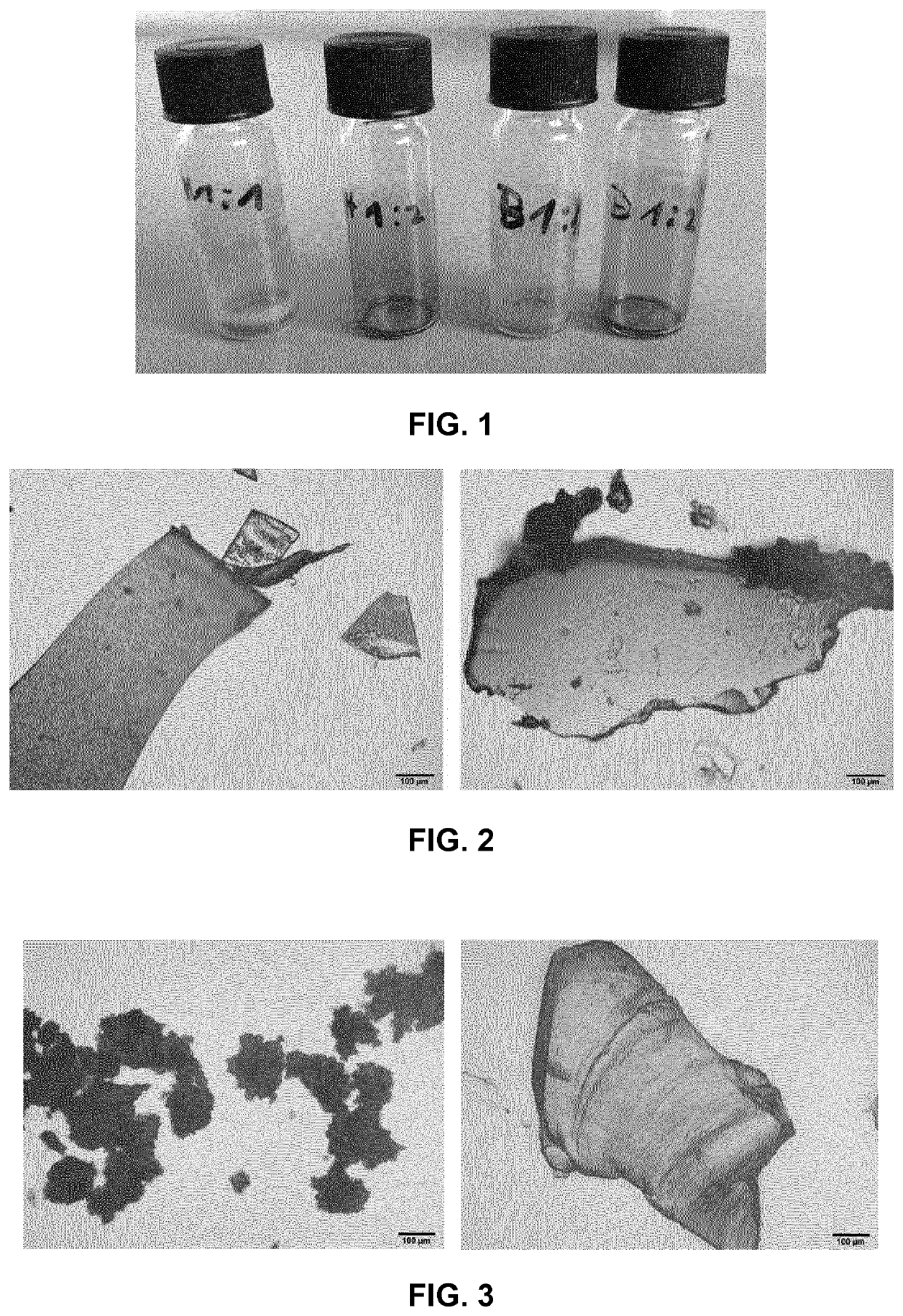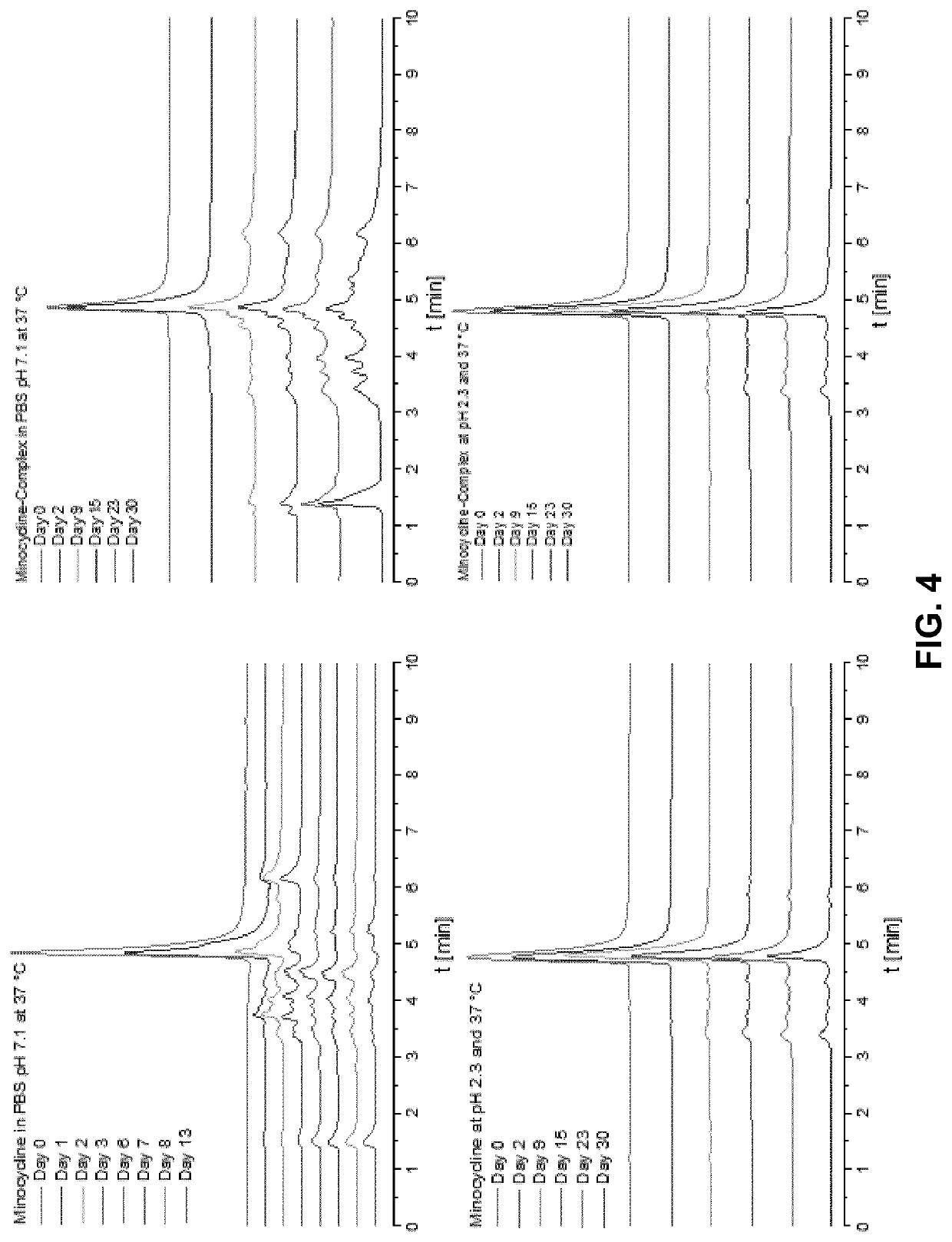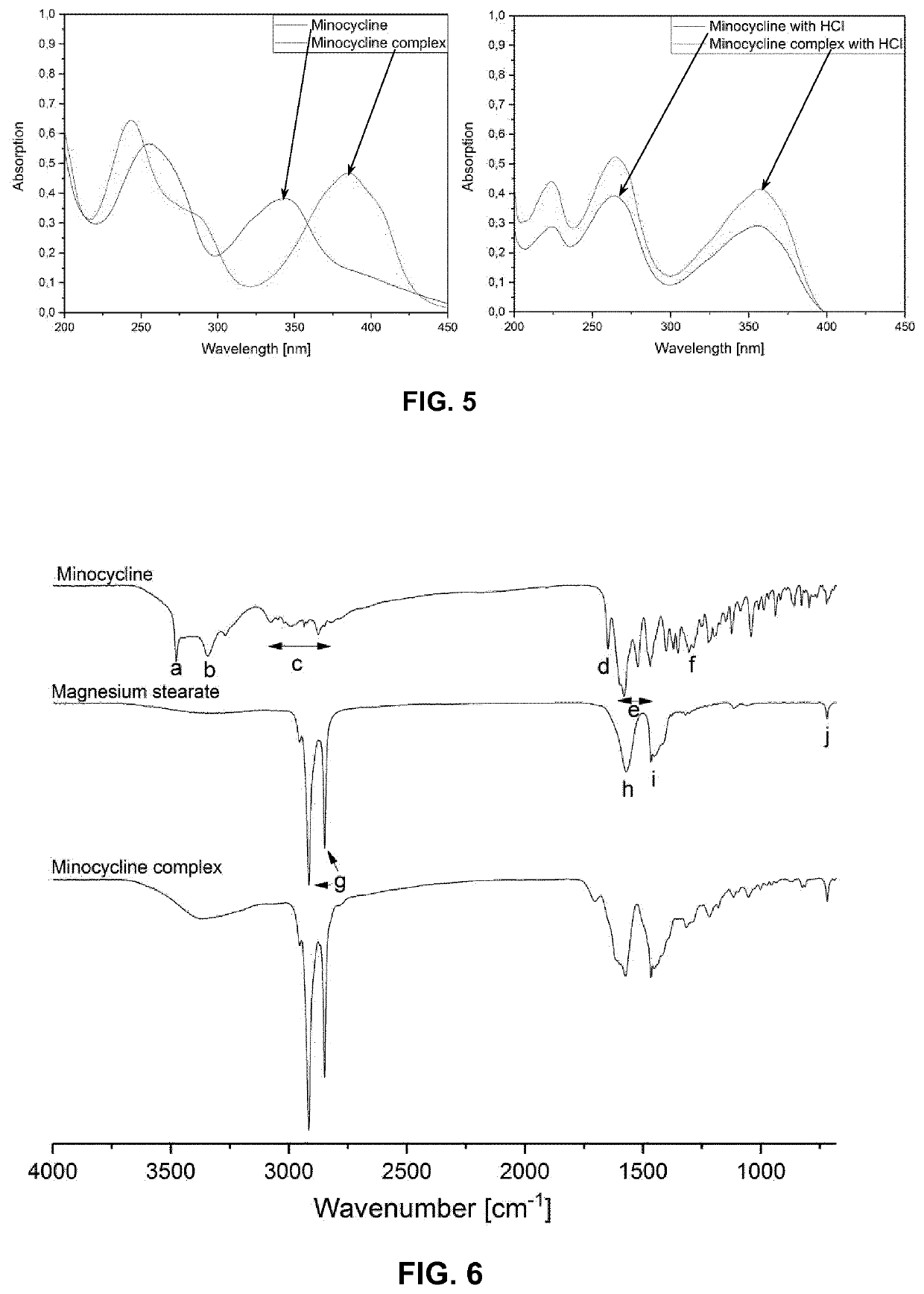Tetracycline complexes with sustained activity
a tetracycline complex and active technology, applied in the direction of antibacterial agents, carboxylic acid amide separation/purification, drug compositions, etc., can solve the problems of high cost of treatment, large impact on individuals and society, application of active substances, etc., to achieve delayed and sustained release, low solubility in water, and modification of the chemical properties of compounds
- Summary
- Abstract
- Description
- Claims
- Application Information
AI Technical Summary
Benefits of technology
Problems solved by technology
Method used
Image
Examples
example 1
of a 1:2 Complex of minocycline (Free Base) and magnesium stearate
[0100]Minocycline (free base) was weight in a round-bottom flask together with magnesium stearate in a molar ratio of 1:2. Specifically, minocycline (10 mg, M=457.48 g / mol, 218.8 μmol) was combined with magnesium stearate (25.848 mg, M=591.24 g / mol, 43.717 μmol). Both components were briefly mixed in a hand-shaker. The mixture was suspended in undenatured ethanol (96% v / v, 2 mL) to afford a light yellow, non-translucent suspension. The closed flask was placed in a water bath under gentle swirling. Beginning at about 50° C., formation and dissolution of the complex started. At about 60-70° C., a clear, orange solution was formed which remained clear upon cooling to room temperature. The solvent was removed in a tempered shaker. FIG. 1 shows vials with the dried products.
example 2
of a 1:1 Complex of minocycline (Free Base) and magnesium stearate
[0101]A complex having a molar ratio of 1:1 was prepared in an analogous way as described in Example 1 by using an appropriately adapted amount of minocycline (free base).
example 3
of a 1:2 Complex of minocycline hydrochloride and magnesium stearate
[0102]A complex of minocycline hydrochloride and magnesium stearate having a molar ratio of 1:2 was prepared in a similar manner as described in Example 1 above, wherein an appropriate amount of minocycline hydrochloride was used such that the molar ratio of minocycline and magnesium stearate was 1:2.
PUM
| Property | Measurement | Unit |
|---|---|---|
| weight average molecular weight | aaaaa | aaaaa |
| glass transition temperature | aaaaa | aaaaa |
| weight average molecular weight | aaaaa | aaaaa |
Abstract
Description
Claims
Application Information
 Login to View More
Login to View More - R&D
- Intellectual Property
- Life Sciences
- Materials
- Tech Scout
- Unparalleled Data Quality
- Higher Quality Content
- 60% Fewer Hallucinations
Browse by: Latest US Patents, China's latest patents, Technical Efficacy Thesaurus, Application Domain, Technology Topic, Popular Technical Reports.
© 2025 PatSnap. All rights reserved.Legal|Privacy policy|Modern Slavery Act Transparency Statement|Sitemap|About US| Contact US: help@patsnap.com



